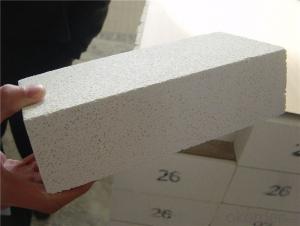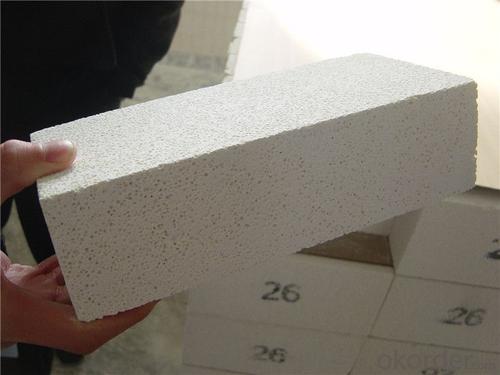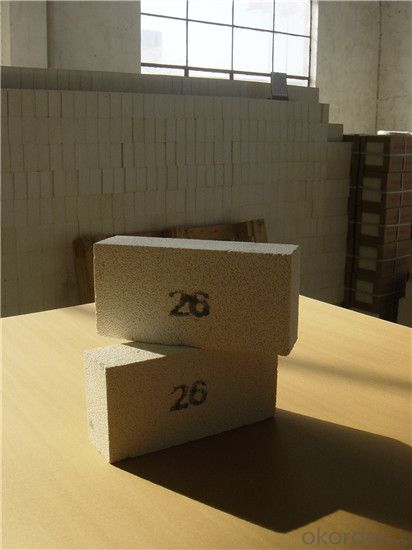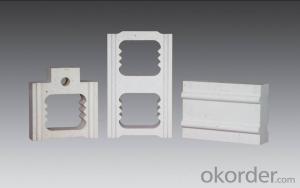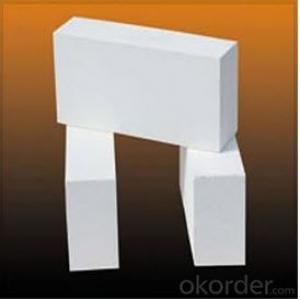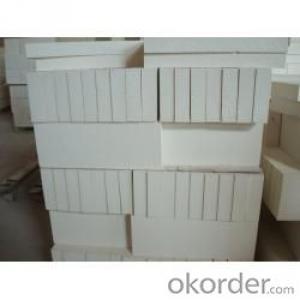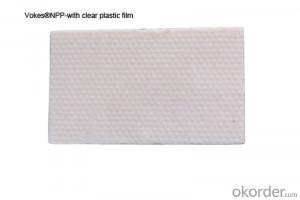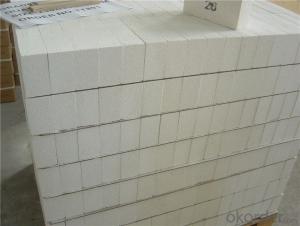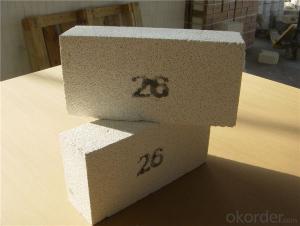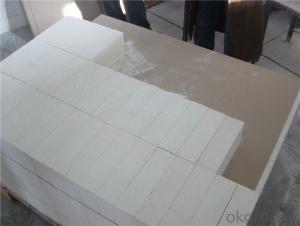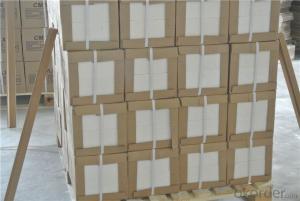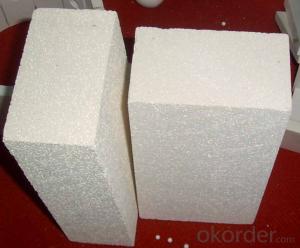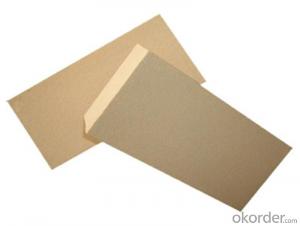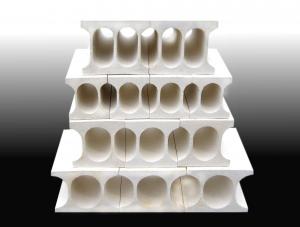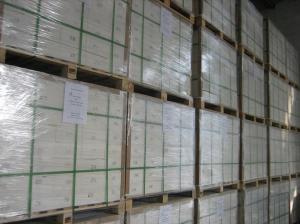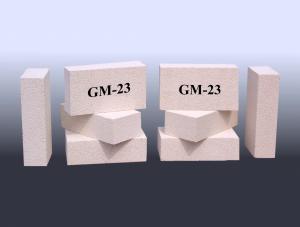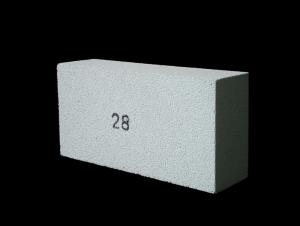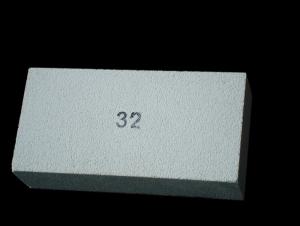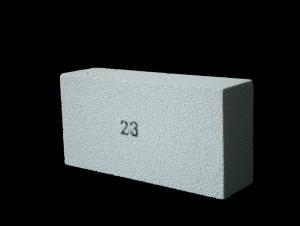Insulating Fire Brick - GJM 28 Light Dense Mullite Insulation Brick
- Loading Port:
- Shanghai
- Payment Terms:
- TT OR LC
- Min Order Qty:
- 1 m.t.
- Supply Capability:
- 10000 m.t./month
OKorder Service Pledge
OKorder Financial Service
You Might Also Like
Thermal Insulation Fire Clay Brick
Refractory brick is a refractory material used in lining furnaces, kilns, fireboxes, and fireplaces.
We provide high quality Refractory Fire Bricks that are used on wide range in the various industries like Cement, Glass and Steel. Refractory Fire Bricks are provided as per the quantity and specifications required by the customers. We provide an extensive range of Refractory Fire Bricks at reasonable prices that depend upon the quantity ordered.
Application
Insulating Fire Brick are used for the lining of converter, alternating current arc furnace, direct Current arc furnace and the ladle slag line, etc.
Company Advantage
(1)Long Insulating Fire Brick manufacture history: 25 years manufacturer
(2)Advanced equipment and good service
(3)Diversification of production standards: ISO ANSI FEPA JIS ASTM
(4)Flexible payment: T/T L/C D/P D/A
(5)Professional marketing team and after-sale service
Insulating Fire Brick main feature:
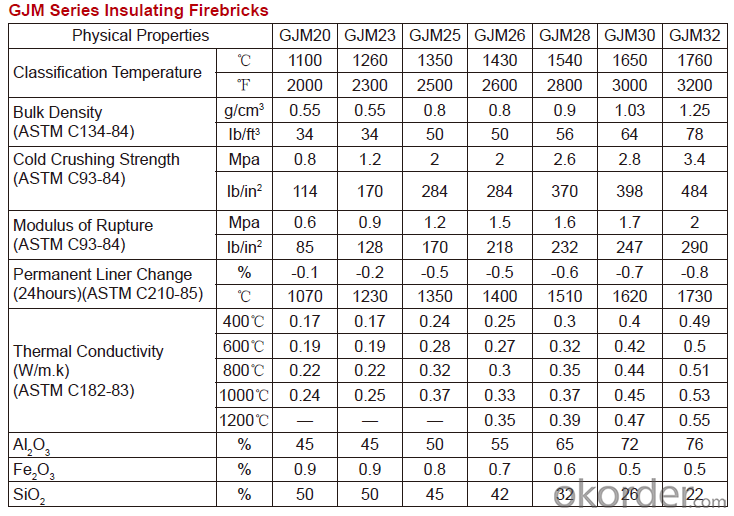
Equipment
1 unit of Ceramic Abrasive (SG Abrasive) pilot production line
2 units of Compact grain Abrasive pilot production lines
1 unit of high-end coated abrasives (abrasive cloth) production line
3 large flexible crushing and sieving lines for grit production lines
6 units of 5000KVA-10000KVA dumping type electric arc furnaces for Brown Fused Alumina fusion
FAQs
Q1 What’s the transport method?
A1 FCL delivery goods with wooden pallet or wooden case by sea; If LCL delivery, must with wooden case; Sometimes need open top, flat rack or bulk cargo.
Q2 What’s the required payment term?
A2 Generally 30% TT as the prepayment, 70% TT before delivery. If need, 100% Irrevocable Letter of Credit or negotiation.
Q3 Which country are our products exported to?
A3 Apart from entire Chinese market, the US, Russia, Japan, Korea, Australia and some Southeast Asian Nations.
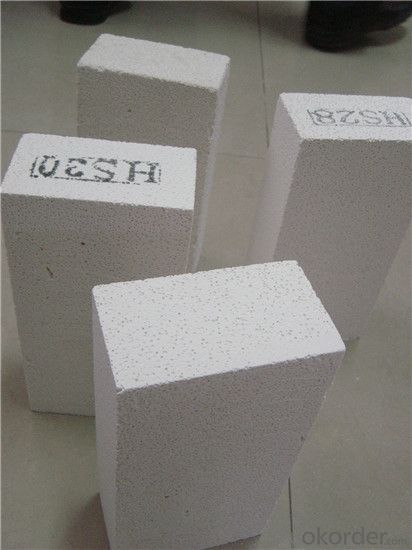
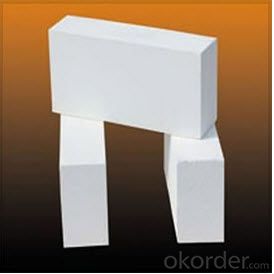
- Q: Are insulating fire bricks resistant to sulfates?
- Insulating fire bricks exhibit resistance to sulfates in general. These bricks consist of high-alumina or silica materials, which possess favorable chemical resistance properties. Sulfates, a type of chemical compound, can undergo reactions with certain materials, leading to deterioration. However, insulating fire bricks are specifically engineered to endure high temperatures and harsh chemical environments, including exposure to sulfates. They commonly find applications in furnaces, kilns, and incinerators where they might come into contact with sulfates. Nevertheless, it is crucial to consider the precise composition and quality of the insulating fire bricks, along with the concentration and duration of sulfate exposure, in order to guarantee their long-lasting performance and durability.
- Q: Are insulating fire bricks suitable for use in glass melting furnaces?
- Yes, insulating fire bricks are suitable for use in glass melting furnaces. Insulating fire bricks have high thermal resistance and low thermal conductivity, making them ideal for retaining heat and preventing heat loss in the furnace. Additionally, their lightweight and porous nature allow for efficient energy utilization and reduced fuel consumption.
- Q: Can insulating fire bricks be used in carbon black reactors?
- Yes, insulating fire bricks can be used in carbon black reactors. These bricks are designed to withstand high temperatures and provide excellent thermal insulation, which makes them suitable for use in carbon black reactors that operate at extreme temperatures.
- Q: Can insulating fire bricks be used for pizza ovens?
- Yes, insulating fire bricks can be used for pizza ovens. Insulating fire bricks are designed to withstand high temperatures, making them a suitable choice for creating a well-insulated and efficient pizza oven. They help retain heat, allowing the oven to reach and maintain the desired temperature for baking delicious pizzas.
- Q: Can insulating fire bricks be used in the construction of coke ovens?
- Yes, insulating fire bricks can be used in the construction of coke ovens. Insulating fire bricks are specially designed to withstand high temperatures and provide excellent thermal insulation. Coke ovens operate at extremely high temperatures, typically around 2000 degrees Fahrenheit, and require materials that can withstand these conditions. Insulating fire bricks have low thermal conductivity, which means they can effectively prevent heat transfer between the oven's interior and exterior. This helps to maintain the high temperatures required for the carbonization of coal in the coke oven, while also minimizing heat loss. Furthermore, insulating fire bricks are lightweight and have high strength, making them ideal for use in the construction of coke ovens. Their lightweight nature allows for easier installation and reduces the overall weight of the structure. Their high strength ensures that they can withstand the harsh operating conditions of the coke oven without cracking or crumbling. In summary, insulating fire bricks are a suitable choice for the construction of coke ovens due to their ability to withstand high temperatures, provide thermal insulation, and offer durability.
- Q: Are insulating fire bricks suitable for insulation in heat treatment furnaces?
- Yes, insulating fire bricks are suitable for insulation in heat treatment furnaces. These bricks are specifically designed to withstand high temperatures and provide excellent thermal insulation. They have a low thermal conductivity, which helps to minimize heat loss and maintain a stable temperature inside the furnace. Insulating fire bricks are also lightweight, making them easier to handle and install. Additionally, they have good resistance to thermal shock, meaning they can withstand rapid changes in temperature without cracking or breaking. Overall, insulating fire bricks are a reliable and effective choice for insulation in heat treatment furnaces.
- Q: Can insulating fire bricks be cut or shaped to fit specific dimensions?
- Insulating fire bricks possess the capability to be tailored or molded according to particular dimensions. Composed of lightweight refractory materials, these bricks are purposely designed to facilitate easy cutting or shaping to fulfill specific necessities. A saw, knife, or alternative cutting tools are suitable for cutting them, while grinding or sanding can be employed to shape them. Such adaptability allows for meticulous customization of the bricks, rendering them a versatile choice for a myriad of applications, including lining furnaces, kilns, and other environments with elevated temperatures.
- Q: Can insulating fire bricks be used for insulation in furnaces?
- Yes, insulating fire bricks can be used for insulation in furnaces. Insulating fire bricks are made from lightweight materials such as clay and minerals, which have excellent thermal insulation properties. They are designed to withstand high temperatures, making them suitable for use in furnaces. These bricks help to reduce heat loss and improve energy efficiency by preventing the escape of heat from the furnace. Additionally, insulating fire bricks can also help to protect the outer structure of the furnace from excessive heat, thereby extending its lifespan. Overall, insulating fire bricks are a reliable and effective choice for insulation in furnaces.
- Q: Can insulating fire bricks be used in ladle covers?
- Yes, insulating fire bricks can be used in ladle covers. Insulating fire bricks are designed to withstand high temperatures and provide thermal insulation. They are commonly used in various industrial applications, including ladle covers, to retain heat and prevent heat loss.
- Q: How thick should the insulation layer be when using insulating fire bricks?
- The thickness of the insulation layer when using insulating fire bricks depends on the specific application and desired level of insulation. However, a common recommendation is to have a minimum insulation layer thickness of at least 2 inches (5 centimeters) to effectively reduce heat transfer and provide adequate thermal insulation.
Send your message to us
Insulating Fire Brick - GJM 28 Light Dense Mullite Insulation Brick
- Loading Port:
- Shanghai
- Payment Terms:
- TT OR LC
- Min Order Qty:
- 1 m.t.
- Supply Capability:
- 10000 m.t./month
OKorder Service Pledge
OKorder Financial Service
Similar products
Hot products
Hot Searches
Related keywords
